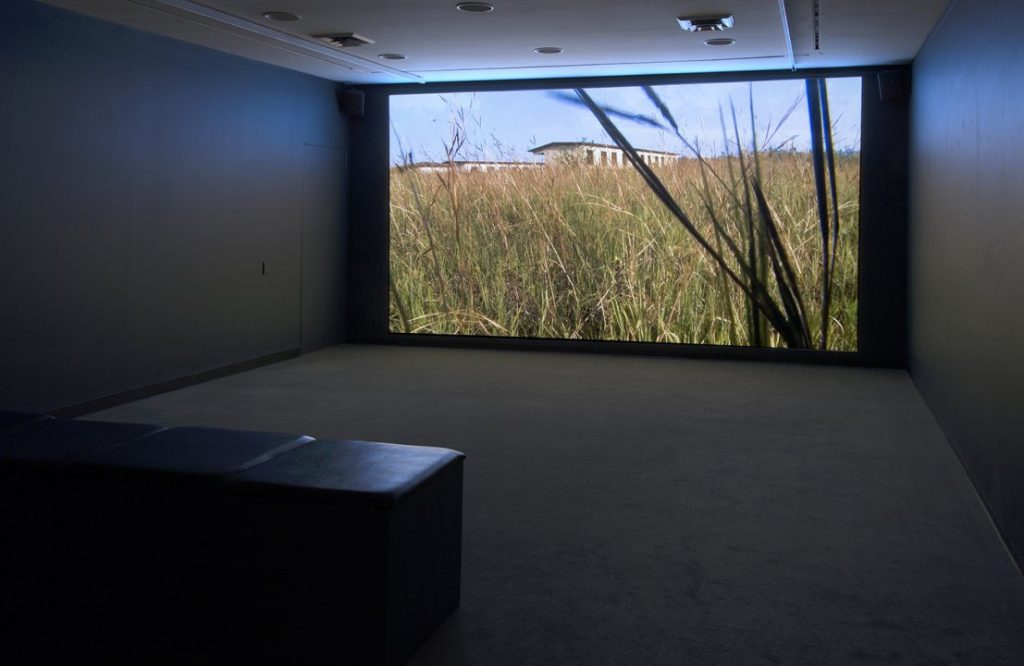
Millie Chen, Tour (2014)
Walking across these sites, Chen actively and physically engages with the land to process difficult events. The audio includes lullabies from the countries represented in the work.
“Tour, 2014, an audio-video installation that contemplates arguably “healed” genocide sites, provokes the question: How can we sustain the memory of that which has become invisible? How can we possibly represent such horrific history and maintain the critical specificity of the local within a narrative about the global? Events that occurred over the last century retain heat as some victims and perpetrators are still alive, and justice, truth, and reconciliation processes are still underway. Yet, with the passage of this amount of time, these genocidal events are already archived as history—we have gained some distance from them, and have even started forgetting: Murambi, Rwanda (April 16–22, 1994); Choeung Ek, Cambodia (April 17, 1975–January 7, 1979); Treblinka, Poland (July 23, 1942–October 19, 1943); Wounded Knee, United States (December 29, 1890).
A history of human atrocities can become easily absorbed, literally, back into the land. Despite the fact that the violent impact of humans scars the earth, nature can readily absorb these acts of horror, often ironically becoming more verdant as a result. But the brutal facts remain. It is only through the persistence of individuals retelling past events that we can keep alive the history, even as acts of atrocity continue to be perpetrated in the present.
The installations and videos of Millie Chen (Canadian, born Taiwan, 1962) function as sensory experiences that question the perceptual and ideological assumptions of the audience. With her focus on sociopolitical inquiry, Chen explores how art can address the human condition through surrogate cues. About her working practice, Chen states, “Essential to my practice is the role of sensory modes of perception in the generation of knowledge. I have experimented with materiality and with immaterial, non-visual elements like sound and scent within specific contexts in order to interrupt habits of viewing. Within my visual art practice, the act of looking is interrogated.””